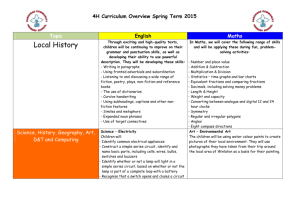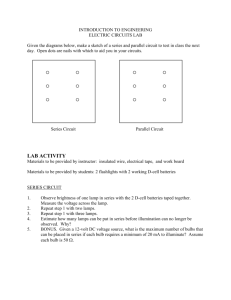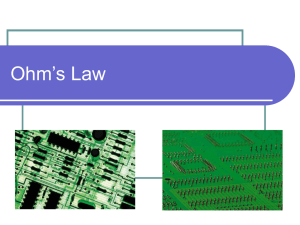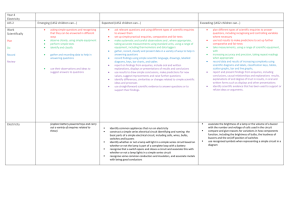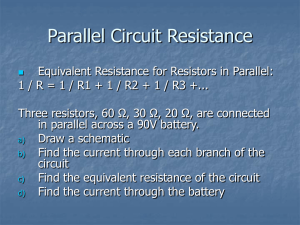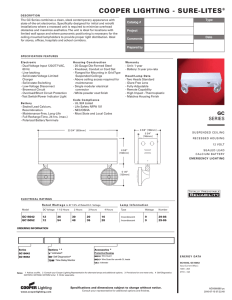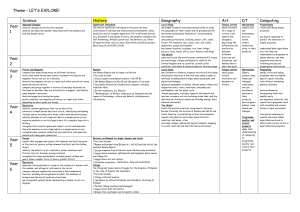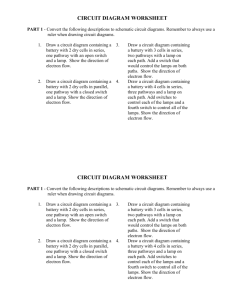Chapter 19: Electric Charges and Currents
advertisement
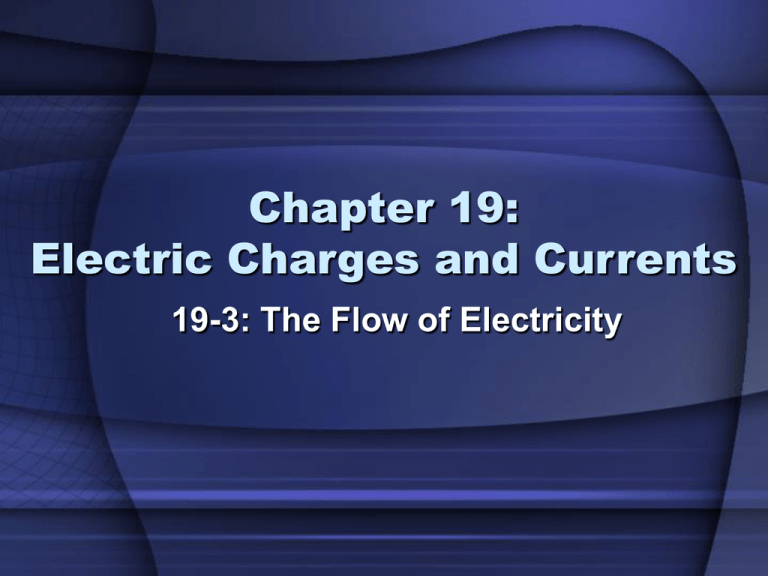
Chapter 19: Electric Charges and Currents 19-3: The Flow of Electricity Making Electric Charges Move • You must do work to move a charged particle against an electric field Unit of Charge: Coulomb (C) Electric Potential Difference (Voltage): work required per coulomb of charge between 2 points Units: Volt (V) Battery • Produces electricity by converting chemical energy into electrical energy • Made up of electrochemical cells which are made from materials called electrodes and electrolyte • Electric cells can be dry (paste-like) or wet (liquid) cells Thermocouples • Produces electrical energy from thermal energy • Releases electric charges as a result of temperature differences • Used in thermometers in cars to show engine temp. • Engine gets warmer, increases flow of charge, moving charge operate gauge (also in ovens and gas furnaces) Photocells • When light with a certain amount of energy shines on a metal surface, electrons are emitted from the surface, electron routed through a wire to create a constant flow of electric charge Electric Current • Circuit: complete path through which electric charge can flow • Current (I): amount of charge that passes a given point at a given time Unit of current: Ampere (A) **Potential Difference is required to produce an electric current** Resistance • Resistance (R): opposition of the flow of electric charge Unit: Ohm (Ω) - Different wires have different resistances - All devices have some resistance - Depends somewhat on temperature: Resistance increases with temperature Ohm’s Law • The current in a wire (I) is equal to the voltage (V) divided by the resistance (R) Current = Voltage Resistance Amperes = Volts Ohms I= V R Calculating Resistance • In a Series circuit, total resistance is calculated by the equation: R = R1 + R2 + R3… • In a Parallel circuit, total resistance is calculated by the equation: Series and Parallel Circuits Series Circuit Parallel Circuit Current • Direct Current (DC): current flow in the same direction (dry cells and batteries) • Alternating Current (AC): amount of current changes in time and reverses direction regularly • Current in your home changes direction 120 times every second Calculations with Current Electricity 1. There is a 22-ohm resistance in the heating element of a coffee pot. It is plugged into a 110 Volt circuit. How much current passes? R= 22Ω I= V V = 110V R I=? I = 110 V 22 Ω I=5A Calculations with Current Electricity 2. Three lamps with 40,60, and 80 ohms of resistance are connected in parallel to a 120 volt circuit. a) What current flows through each lamp? b) What is the total resistance of the 3 lamps? c) What is the total current used by the 3 lamps? R1=40 Ω Given: V = 120 V R2=60 Ω R3=80 Ω a) What current flows through each lamp? Lamp 1: I = V/R I = 120V/40 Ω = 3.0 A Lamp 2: I = V/R I = 120V/60 Ω = 2.0A Lamp 3: I = V/R I = 120V/80 Ω = 1.5 A b) What is the total resistance of the 3 lamps? Given: R1=40 Ω R2=60 Ω R3=80 Ω Since the circuit is in parallel, we use the equation: 1/R1+1/R2+1/R3 = 1/40Ω + 1/60Ω +1/80Ω = 0.054Ω Then divide: 1/0.054Ω = 18.5Ω Total resistance = 18.5Ω c) What is the total current used by the 3 lamps? Given: V = 120 V RT= 18.5Ω I = V/RT I = 120V/18.5Ω I = 6.5 A
